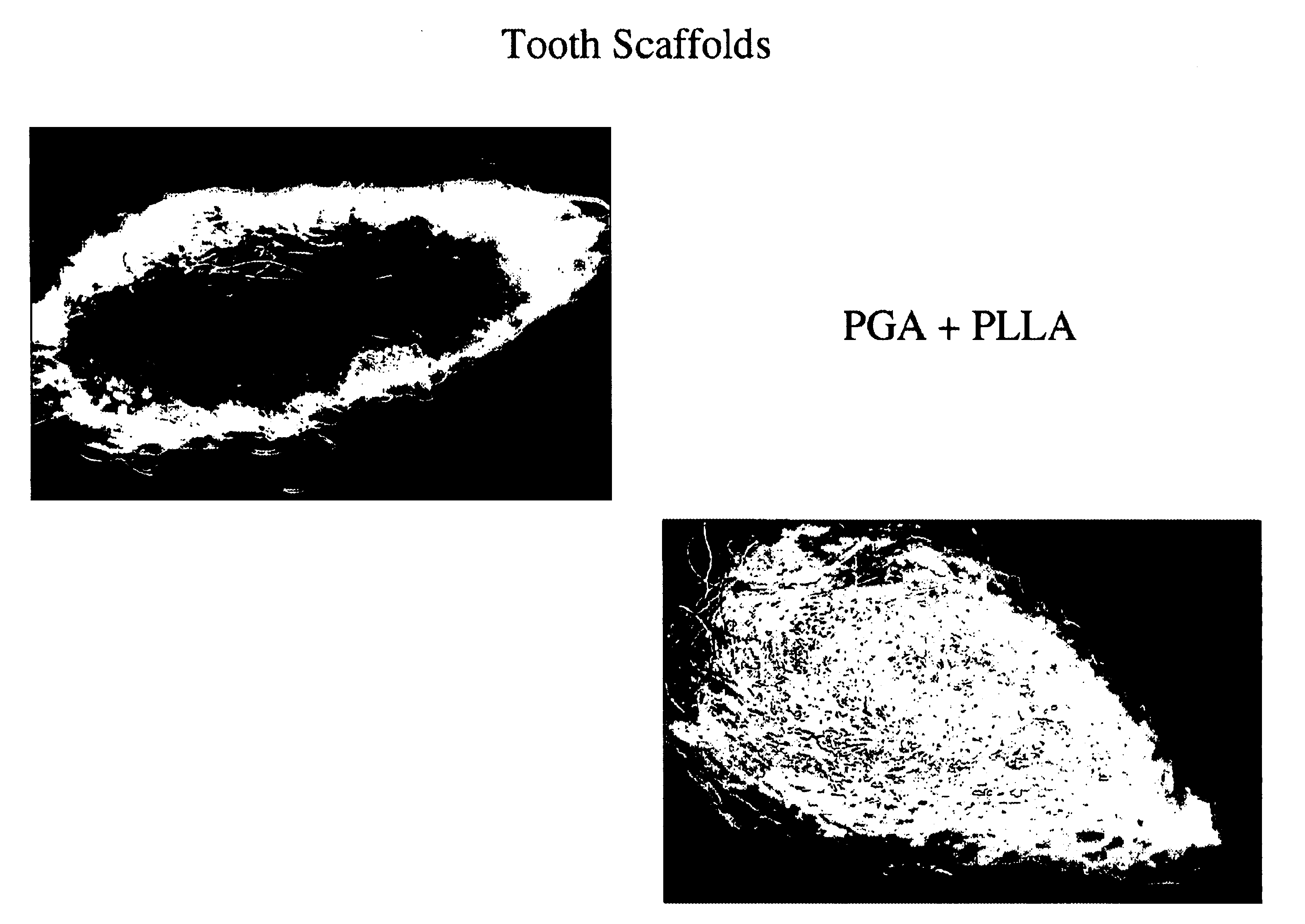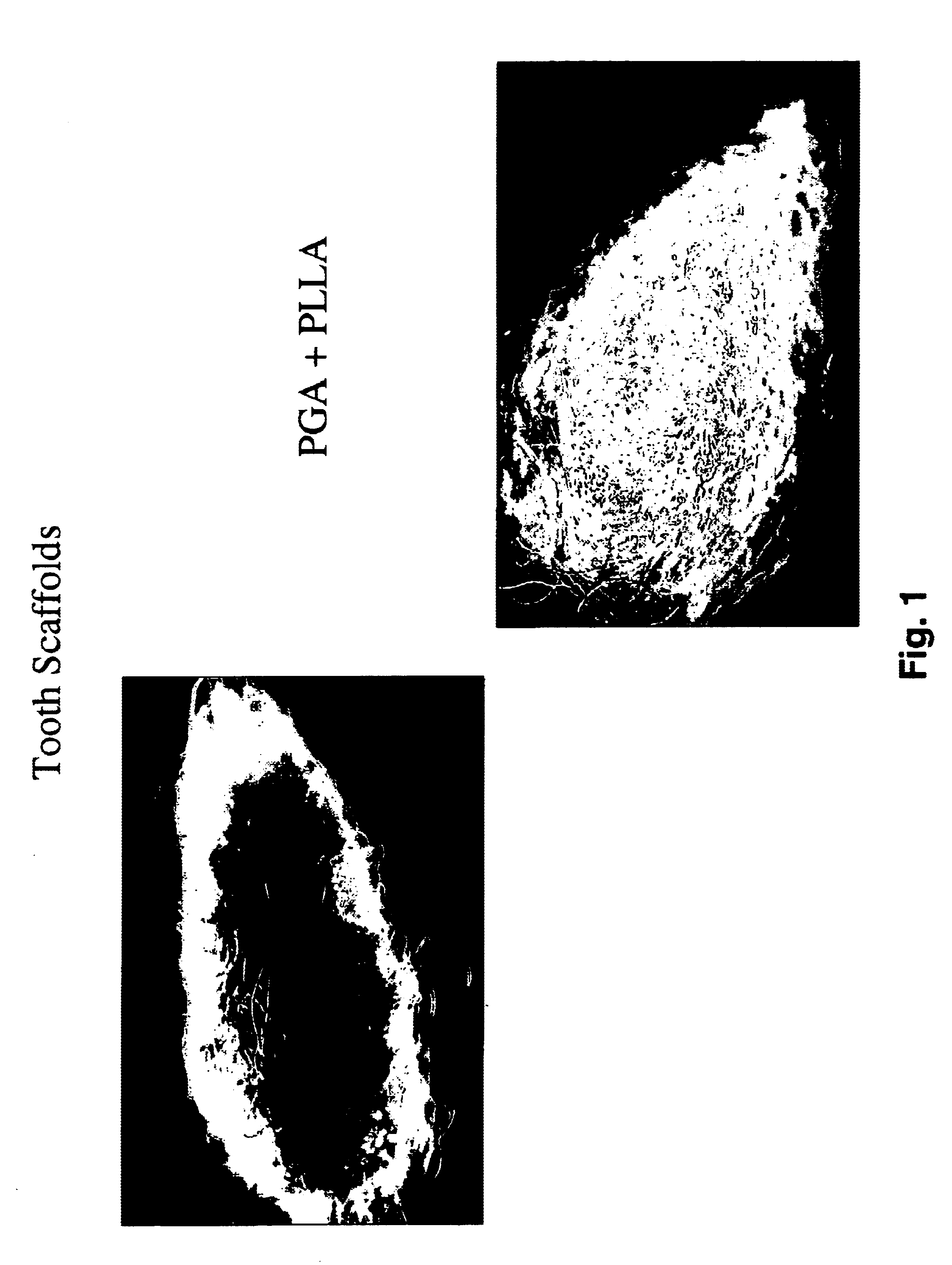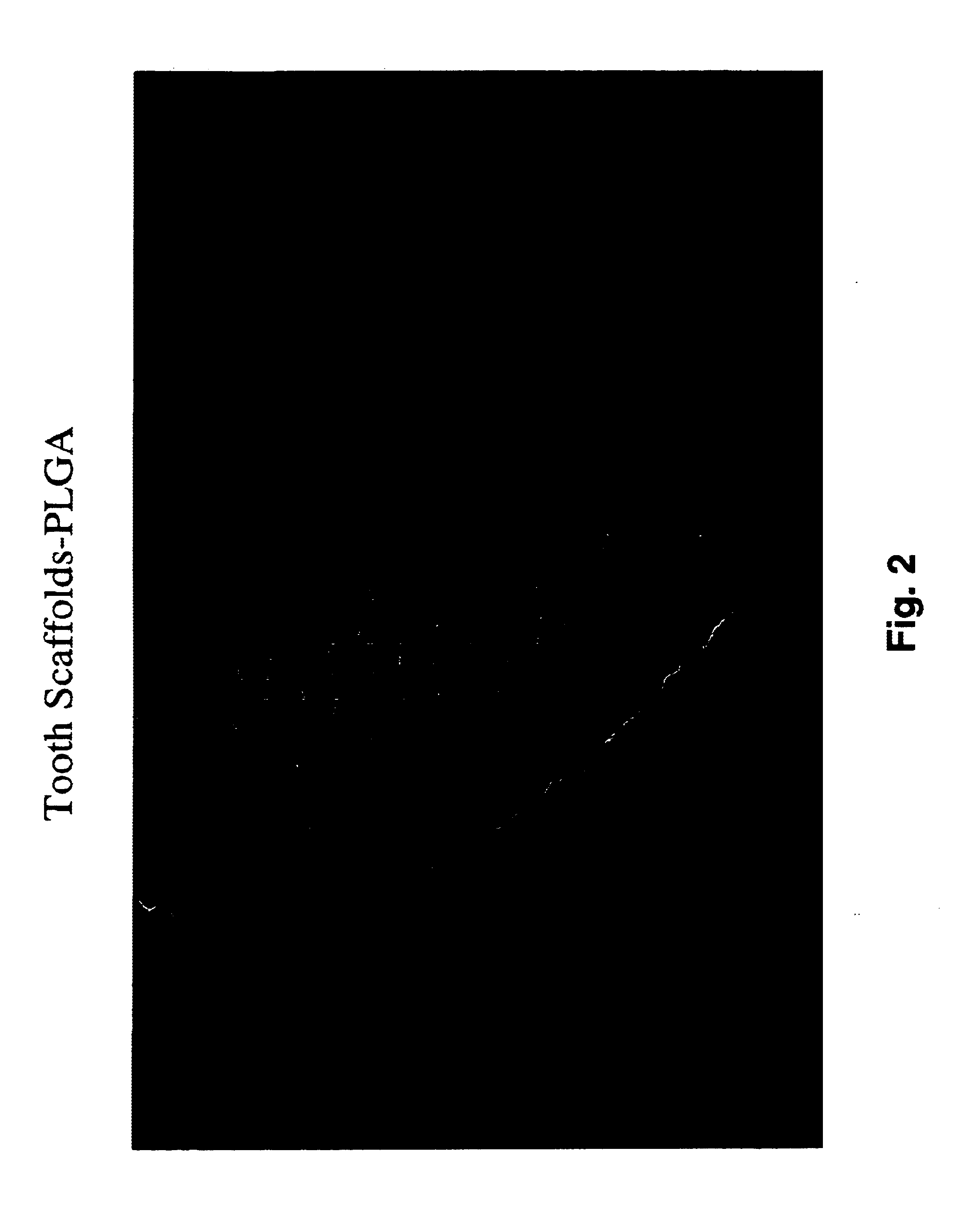Methods and compositions for culturing a biological tooth
- Summary
- Abstract
- Description
- Claims
- Application Information
AI Technical Summary
Problems solved by technology
Method used
Image
Examples
example
[0037]A. Materials and Methods[0038]Chemicals. polyglycolic acid (PGA), poly-L-lactic acid (PLLA), poly-L-lactide-co-glycolide (PLGA), chloroform, dichloromethane, polyvinylsiloxane dental impression material (Reprosil), sodium chloride, Hank's Balanced Salt Solution (HBSS), phosphate-buffered saline solution (PBS), Dulbecco's Modified Eagle Medium (DMEM), fetal bovine serum, Glutamax, penicillin, streptomycin, sorbitol, 0.9% saline solution, iodine solution (Povidine), 70% ethanol, collagen (type I), 0.01 M hydrochloric acid, collagenase, dispase, ketamine, xylazine (Rompun).[0039]Tissues. Human incisors and molars, six-month-old porcine third molar tooth tissue.[0040]Preparation of tooth molds. Extracted human incisors and molars were used to cast negative impression tooth molds in polyvinylsiloxane dental impression material (Reprosil). Once the impression material hardened, the teeth were removed by cutting an opening in one side of the mold with a razor blade. This method leave...
PUM
| Property | Measurement | Unit |
|---|---|---|
| Time | aaaaa | aaaaa |
| Time | aaaaa | aaaaa |
| Time | aaaaa | aaaaa |
Abstract
Description
Claims
Application Information
 Login to View More
Login to View More - R&D
- Intellectual Property
- Life Sciences
- Materials
- Tech Scout
- Unparalleled Data Quality
- Higher Quality Content
- 60% Fewer Hallucinations
Browse by: Latest US Patents, China's latest patents, Technical Efficacy Thesaurus, Application Domain, Technology Topic, Popular Technical Reports.
© 2025 PatSnap. All rights reserved.Legal|Privacy policy|Modern Slavery Act Transparency Statement|Sitemap|About US| Contact US: help@patsnap.com



